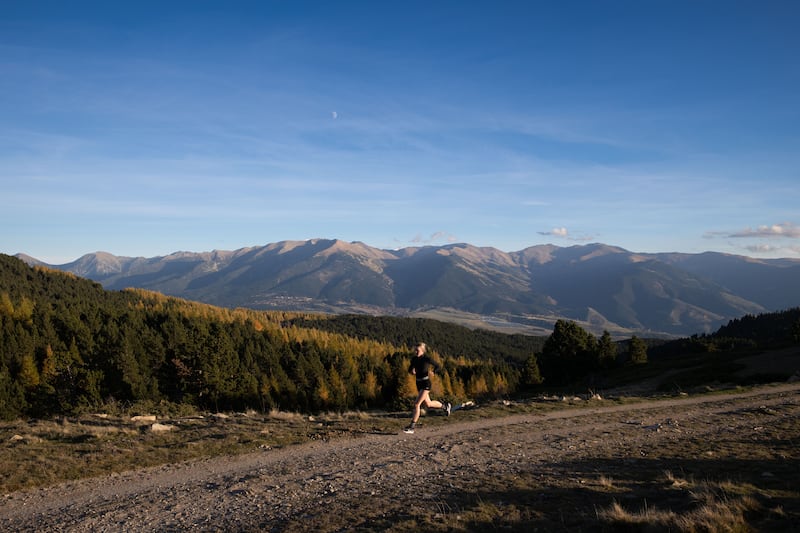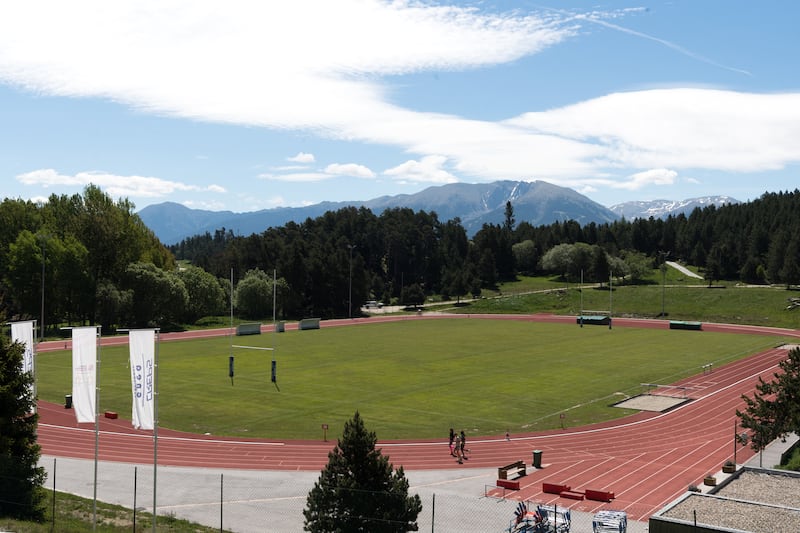There is nothing new or particularly novel about athletes seeking out high-altitude training locations to help them prepare for major championships. It has long been regarded as one of the truly natural performance-enhancing aids. However, it has become a lot more popular, and seemingly required, since my competitive running days.
I got a reminder of that last week when spending some time in Font Romeu. It was my first visit to the popular high-altitude training centre in the French Pyrenees. Situated 1,850m above sea level – a bit over a mile high, in old money – Paula Radcliffe helped put it on the map when frequently training there during her peak running years.
I was there with a group of athletes from Australia, Ireland, Sweden and the UK, all working together on the hard days and sharing the trails on the recovery days, when the runs are always made easier with good company. I wasn’t running anywhere near their level, but it can still take some time to find the level you need to be working at when you’re at altitude.
There is always the danger of getting a bit too enthusiastic the first few days, especially with a group. The need for more time to recover is critical. You need to find what works for you as it can be a very individual reaction to the mountain air. This is the whole purpose of altitude training, to run where the oxygen level in the air is far lower than at sea level, therefore forcing the body to slowly adapt by increasing the oxygen-carrying red blood cells.

Font Romeu is not the easiest place to get to. There is a choice of airports to fly in to, but all are still 90 minutes to two hours away. This can all add to the logistical planning, but athletes typically stay at least two or three weeks for the benefits of altitude training to kick in.
What is changing is the frequency with which athletes spend training at altitude. They realise it’s so important to enable them to achieve peak fitness and reach new levels year-on-year. This is particularly the case in middle- and long-distance events, where the aerobic capacity to train and compete at a faster pace is increasing all the time and can require incredible fine tuning to get the timing right.
There are many places all over the world where athletes can spend time training at altitude, generally above 1,500m, where just living and breathing there will improve fitness.
The athlete centre in Font Romeu was officially opened in 1967, even though there were some early pioneers who discovered the benefits long before then. The French were not happy with their results in the 1964 Olympics in Tokyo, where they won 15 medals, only one of which was gold. They decided that they needed to build a training centre ahead of the Mexico Olympics.
The 1968 Olympics would take place at altitude and as a result the National Altitude Training centre was developed in Font Romeu. There were other candidates, but the altitude and climate were perfect and it has become a place of pilgrimage for athletes ever since.

The centre has a recently resurfaced six-lane track built in a bowl, just below the sports centre where athletes can choose to stay in one of the 140 beds. There is the option to sign up for full board which includes three meals a day and full access to all the sports facilities for a very reasonable price.
This includes a fully equipped gym and weights room, a 50m swimming pool and access to environmental rooms, where athletes can train and spend time at even higher altitude levels. They can also set the room to high temperatures and humidity. This allows the athletes to acclimatise when an event may be planned for an extremely warm place like Tokyo could be in mid-September for this year’s World Championships.
The French team returned from the 1968 Olympic Games with 15 medals including seven gold and a new template for success was in place.
Even though the centre was built by the French, for the French, it has become a proper international spot. For many years, training at the centre would have been very much a spartan existence. Particularly if you arrived without a car, as the 2km walk down to town would probably seem okay until you had to turn around and hike back up. Not ideal for recovery between training sessions.
Nowadays more athletes tend to stay closer to town in rented accommodation and cook for themselves. Arriving by car also affords more flexibility and variation of running routes throughout the week.
If altitude is one of the most beneficial training factors available to athletes, I also wonder if it is a combination of the altitude and the attitude that delivers the greatest results. Being away from all distractions and living the life of an athlete, away from home comforts and daily life, is the best approach.
Like anything, the success stories will always be highlighted and embraced by those who know what it takes to be successful. It just all seems so simple when it comes to altitude, as you are in the perfect environment – the best of weather, the nicest running trails and nothing else to do apart from sleep, eat and train.
I did manage to get out and explore some of the trails, swim in the nearby lake Matemale and borrow a bike to take on some climbs seen in the Tour de France.
You might think the altitude would make normal levels of activity more difficult, but I found if you controlled the effort and didn’t run up too many hills I was able to run at the same pace I do at home.
The big lesson for me was to measure my effort, not rush into anything. Not even to escape a stormy rain shower. The altitude definitely takes adjusting to, but with time and patience the rewards make it all worthwhile. Not least the health and fitness benefits of simply being in such a clean environment.











